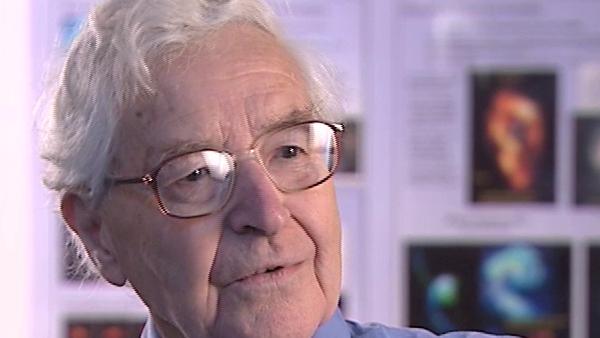NEXT STORY

Physics versus astronomy
RELATED STORIES

NEXT STORY

Physics versus astronomy
RELATED STORIES


|
Views | Duration | |
|---|---|---|---|
| 31. Developing the department of radio astronomy | 46 | 06:23 | |
| 32. Martin Ryle's ill health and new directions for the group | 64 | 08:22 | |
| 33. New directions in the group | 48 | 02:33 | |
| 34. Pulsars and the Square Kilometre Array | 66 | 02:14 | |
| 35. Physics versus astronomy | 68 | 04:35 | |
| 36. The importance of pulsars | 73 | 05:40 |

One of the features of pulsars which has always interested me is the fact that even after 40 years… last year we celebrated the 40th anniversary of the discovery of pulsars in 1967 and I went to a meeting, a big international meeting with about 100 scientists from all over the world. And the enormous amount of interest in so many different directions, which the discovery initiated, I mean the… there’s so many different things involved with pulsar research now. And this… this links up also with the future of the group in the sense that we are a very active part of the development of the next international radio telescope called the Square Kilometre Array, which is a vast project in which, I think, almost every active radio astronomy group in the world is involved in some way or another. In… in building a complex instrument which is going to have an enormous high sensitivity but, in a sense, is a grand enlargement of… of the work I was doing with my array when I built the array that discovered pulsars. It’s a huge number of elements covering a large area of ground, in this case a square kilometre, so it has enormously high sensitivity. And, unlike my array which had just a simple receiver, this will have many receivers at many different wavelengths and will… not only will it have an enormously high sensitivity, but will have enormous coverage of different wavebands which open up all kinds of different fields of research. And the whole pulsar field now is still… although… although the Square Kilometre Array when it’s ultimately built will not be confined to pulsar research, it will be the instrument for radio astronomy, but pulsars will be a big part of it.
Antony Hewish (1924-2021) was a pioneer of radio astronomy known for his study of intergalactic weather patterns and his development of giant telescopes. He was awarded the Nobel Prize for Physics in 1974, together with fellow radio-astronomer Sir Martin Ryle, for his decisive role in the groundbreaking discovery of pulsars. He also received the Eddington Medal of the Royal Astronomical Society in 1969.
Title: Pulsars and the Square Kilometre Array
Listeners: Dave Green
Dave Green is a radio astronomer at the Cavendish Laboratory in Cambridge. As an undergraduate at Cambridge his first university physics lecture course was given by Professor Hewish. Subsequently he completed his PhD at the Cavendish Laboratory when Professor Hewish was head of the radio astronomy group, and after postdoctoral research in Canada he returned to the Cavendish, where he is now a Senior Lecturer. He is a Teaching Fellow at Churchill College. His research interests include supernova remnants and the extended remains of supernova explosions.
Duration: 2 minutes, 14 seconds
Date story recorded: August 2008
Date story went live: 25 June 2009